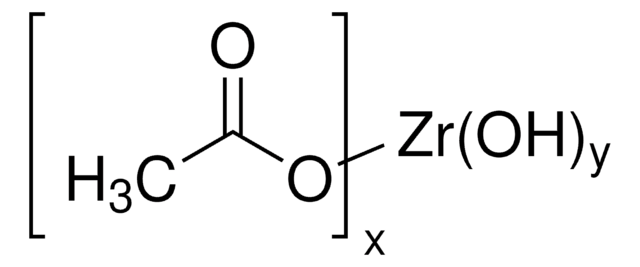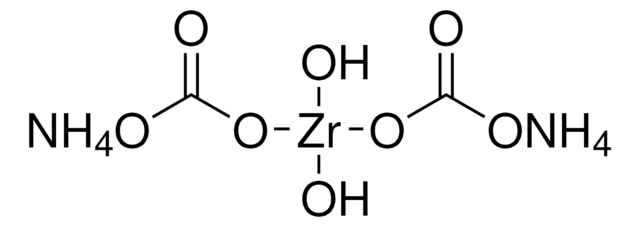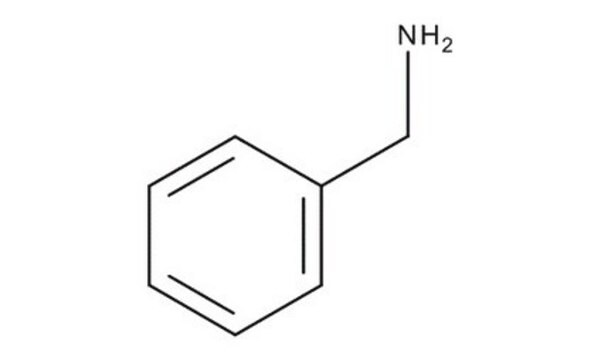413801
Zirconium acetate solution
in dilute acetic acid
Synonym(s):
Acetic acid, zirconium salt
About This Item
Recommended Products
form
liquid
Quality Level
composition
Zr, 15.0-17.0% gravimetric
reaction suitability
core: zirconium
concentration
in dilute acetic acid
density
1.279 g/mL at 25 °C
SMILES string
CC(=O)O[Zr](OC(C)=O)(OC(C)=O)OC(C)=O
InChI
1S/4C2H4O2.Zr/c4*1-2(3)4;/h4*1H3,(H,3,4);/q;;;;+4/p-4
InChI key
MFFVROSEPLMJAP-UHFFFAOYSA-J
Related Categories
Application
- a zirconium based precursor for the development of zirconia coatings
- a stabilizer for colloidal solutions, controlled growth of ice crystals, water proofing, and flame retardant treatments
signalword
Warning
hcodes
Hazard Classifications
Eye Irrit. 2 - Skin Irrit. 2
Storage Class
10 - Combustible liquids
wgk_germany
WGK 1
flash_point_f
Not applicable
flash_point_c
Not applicable
Choose from one of the most recent versions:
Already Own This Product?
Find documentation for the products that you have recently purchased in the Document Library.
Customers Also Viewed
Articles
Magnetism and magnetic materials have been of scientific interest for over 1,000 years. More recently, fundamental investigations have focused on exploring the various types of magnetic materials and understanding the magnetic effects created by electric currents.
The properties of many devices are limited by the intrinsic properties of the materials that compose them.
Our team of scientists has experience in all areas of research including Life Science, Material Science, Chemical Synthesis, Chromatography, Analytical and many others.
Contact Technical Service











